#catbells fell
Photo

30 Days of Fells
Day 27: Catbells, Ard Crags and Causey Pike from the Bank of Derwentwater near Friars Crag
Painted on a lakeside bench on a chilly January day. I just had to record the quality of the light as sunset approached.
Now available on all kinds of things printed to your order at:
https://www.redbubble.com/shop/ap/58044442
Or the unframed 7x7inch original painting is available for £35 incl UK post.
Please private message me to purchase.
Thanks!
Sam aka LymphomaLass xx
#catbells#catbells fell#ard crags#causey pike#derwentwater#friars crag#Cumbria#cumbrian fells#cumbrian hills#lake district#mountains and lakes#lake district national park
0 notes
Text

(English) Lake District scene: view from Latrigg Fell of Catbells and Derwent Water.
(Photo by Dave Massey)
* * * *
“I read that beauty has historically demanded replication. We make more of anything we find aesthetically pleasing, whether it’s a vase, a painting, a chalice, a poem. We reproduce it in order to keep it, extend it through space and time. To gaze at what pleases—a fresco, a peach-red mountain range, a boy, the mole on his jaw—is, in itself, replication—the image prolonged in the eye, making more of it, making it last. Staring into the mirror, I replicate myself into a future where I might not exist.”
― Ocean Vuong, On Earth We’re Briefly Gorgeous
#Lake District#Dave Massey#beauty#Latrigg Fell of Catbells#Derwent Water#Ocean Vuong#On Earth We're Briefly Gorgeous#quotes
16 notes
·
View notes
Text

Catbells fell in Lake District
0 notes
Text
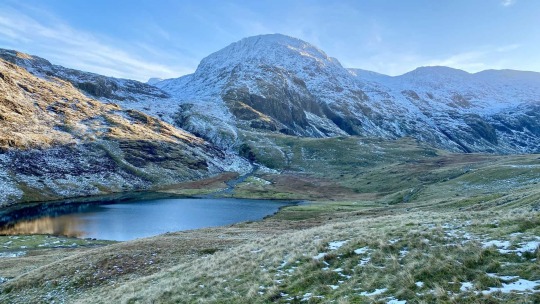

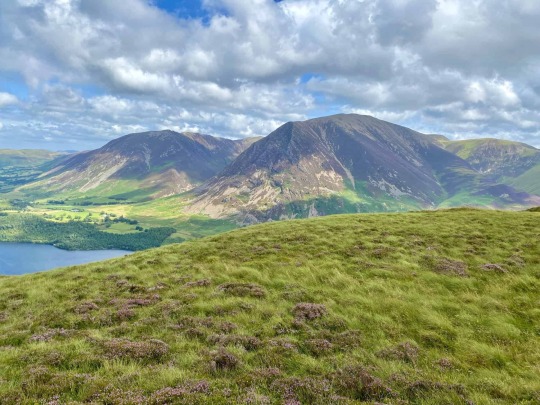
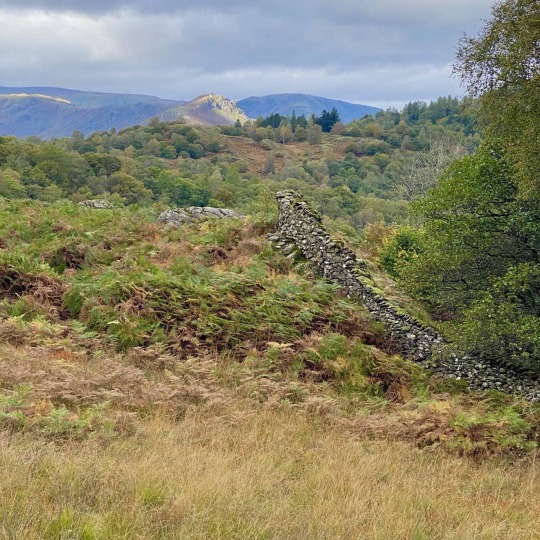
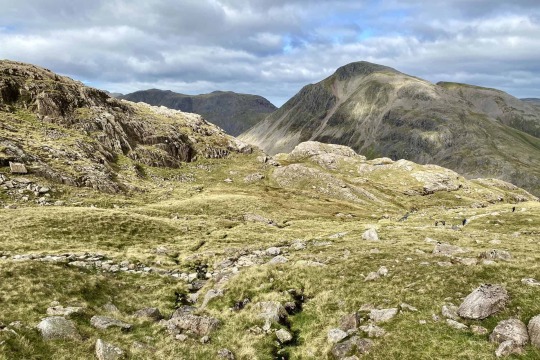

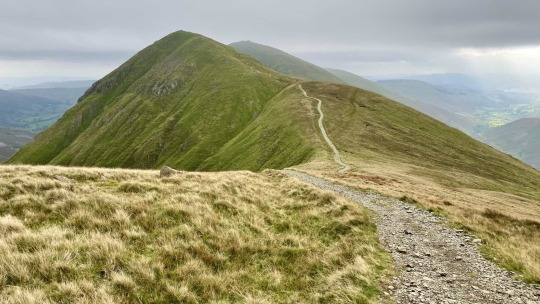
🚨🔝🗺️ BIG NEWS! 🎉 My latest blog, "The Ultimate Alfred Wainwright Lake District Fell List", is finally LIVE! 🚀
📚 Delve into this detailed guide, sorting through the fells by height 🏔️, alphabetical order 🅰️🅱️, and the 7️⃣ Pictorial Guides in which they appear.
From the mighty Scafell Pike to the charming Catbells, this extensive list offers a wealth of details. Grid references 🧭, elevations 📏, and so much more about your favourite fells are now at your fingertips! 🙌
Visit ➡️ https://www.paulbeal.com/list-of-wainwrights
0 notes
Photo
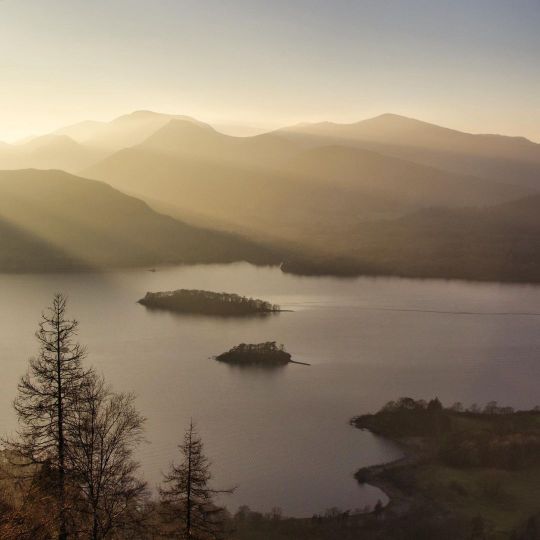
The latest rays of sunshine over the North Western Fells. #wallacrag #derwentwater #catbells #causeypike #catbells #sunset #lakedistrict #lakedistrictnationalpark #lakedistrictuk #lakedistrictwalks #lakedistricthikers #igerscumbria #lakedistrictphotography #canonm50 #luminar (at Walla Crag) https://www.instagram.com/p/Cou4QiaDEG-/?igshid=NGJjMDIxMWI=
#wallacrag#derwentwater#catbells#causeypike#sunset#lakedistrict#lakedistrictnationalpark#lakedistrictuk#lakedistrictwalks#lakedistricthikers#igerscumbria#lakedistrictphotography#canonm50#luminar
1 note
·
View note
Video
Fell Reflections by robert Stevens
Via Flickr:
A savage Winter view over Derwentwater and the freezing fells beyond.
#lakedistrict#catbells#cumbria#england#derwentwater#fells#winter#scenery#nature#outdoors#landscape#forest#mountains#snow#photography#reflection#lake
28 notes
·
View notes
Photo
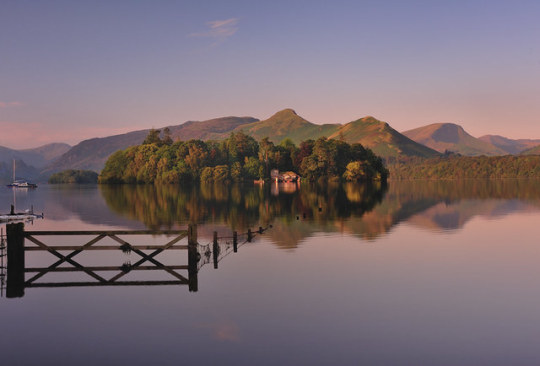
Submerged by images@twiston Submerged - A serene and calm late summer's day dawns on Derwentwater with the submerged gate at Crow Park reflected in the still water of the lake. Lake District, Cumbria website | instagram | 500px | twitter. Original: https://www.flickr.com/photos/132822455@N05/48722839576
#derwent#dawn#pastel#pastels#summer#submerged#derwentwater#lake#cumbria#lakedistrict#keswick#fence#gate#catbells#daybreak#island#crowpark#derwentisle#nationalpark#fell#fells#mountains#landscape#imagestwiston#still#water#reflection#reflections#morning#mirror
0 notes
Photo
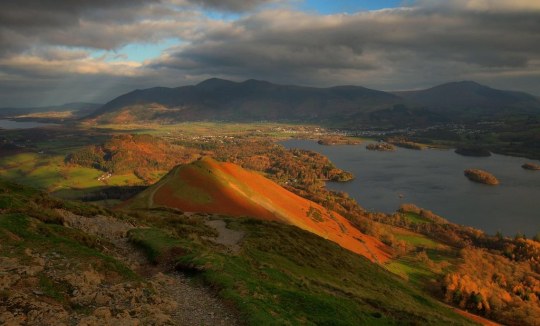
Catbells by Andy Watson1 Taken around 3-4 years ago on an autumn morning hike up Catbells. Once the sun rose above the fells, it created some really nice light! https://flic.kr/p/2mxcPFN
1 note
·
View note
Photo
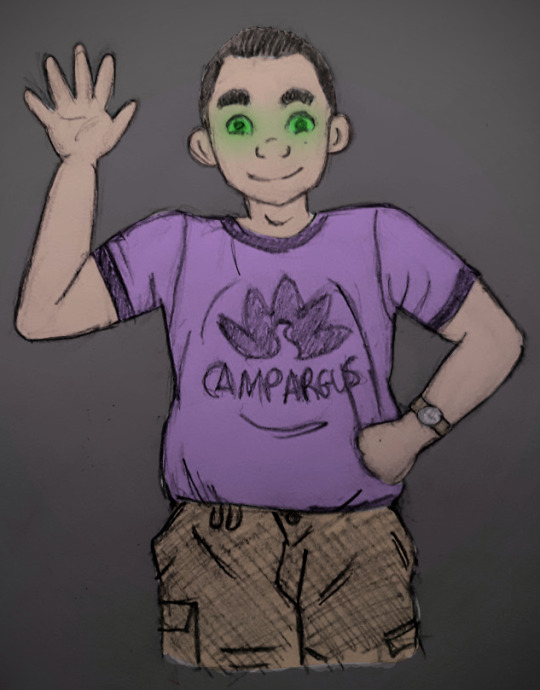
So… I made an Avatarsona!
He’s an avatar of the eye, a camp counsellor who understands what your going through, like really understands.
Statement under the cut:
Have you ever gone to a summer camp? Not many people have, it’s not as big of a thing over here as it is in America. A few of my friends have gone to Scout camps and things like that but they’re two weeks at most, I’m talking about a proper summer camp, like 3 months long.
I went to one once. My parents were midway through a messy divorce and my mum didn’t want me under her feet while she moved house. So, she found Camp Argus. It was exactly what she was looking for; decently modern facilities with a bit of rustic charm, tucked away in a valley of the lake district, with a few canoes and a fleet of minivans to truck kids to and from various activity sites in the area. Though I think the real reason she picked it was the counsellors. The website touted that all their staff were “trained to support young people to overcome difficulties and become resilient and confident adults who contribute positively to their communities”. I’d been struggling a bit at school, nothing major, just acting out in class and pushing a few of the less confident kids around. But I think it had been worrying her. So, summer holidays came, and I was packed off to camp.
I’d never been away from home for long, and I’ll be honest, I loved it. The activities were fun and challenging, I got on with all the other kids (I think I’m still friends with a few of them on Facebook) and being away from all the tension at home felt like I could breathe properly for the first time in years. But I didn’t really engage with any of the counsellors. I was an intensely private child and as nice as they were, all their interest in me felt cloyingly fake. There was one exception though.
There was nothing particularly remarkable about him, in fact he was pretty much a walking stereotype of a camp counsellor. Too big cargo pants and a gaudy camp t shirt on a plump but sturdy frame, with short cropped hair and a face creased with smile lines. Some might describe him as having ‘kind eyes’, but there was something more to it than that. When he was looking at you, you couldn’t help but feel completely seen. I hated it even more than the cliché how are you doing’s the other counsellors dolled out.
I remember this one hike; he was leading my group up Catbells. I’d hurt my ankle and had had to slowed down, so he fell to the back of the group to keep me company. I don’t remember how we got onto the topic, but we started talking about my life back home. Everything about my parent divorce, the arguments, leaving my old school. I told him more about how it made me feel than I’ve told anyone in my life, even now. By the time I’d stopped talking, we were back at camp, it must have been hours. And the whole time he hadn’t stopped staring at me, his eyes full of understanding but also a touch of something else, curiosity? hunger?
I tried to avoid him after that. It had felt nice to talk through things sure, and his curiosity didn’t feel fake like it did with the other counsellors, quite the opposite. But I was worried about what else I might say if we talked again. I felt like I would end up sharing so much of myself that there wouldn’t be anything left. It wasn’t till the last week that I properly saw him again. Everyone in the camp was gathered around the fire pit for some scary stories. Just basic stuff, ‘humans lick too’ ‘hook hand’ you know, the classics. That was until it was his turn.
It started like any other story: a teenage boy was coming back from school in a storm, and he missed the bus. His phone was out of charge so he couldn’t call anyone, and the wind was getting colder and colder, so he decided to walk home.
The counsellor began to describe the route he took: the house with the bush shaped like a face that always made the boy uncomfortable; the yellow car with a ‘for sale’ sign in the back window that he liked to imagine buying one day; the corner store with posters from months ago, of the circus he had visited with his mum, still taped to the glass.
I felt like the air was being squeezed from my lungs, my stomach pooling with a heavy dread, skin crawling. He was describing my walk home. All the landmarks, all the thoughts, it was as if he had plucked them from my head word for word. He continued on with his story.
The boy stopped under a tree for some shelter when he saw a kid from the year below him walking by with an umbrella. He was scrawny and annoying with a shock of hair so blonde it was almost white, and the boy knew it would be easy to scare him into giving up his things. The boy raised himself to his full height and prowled over to the smaller child, shoving him roughly to the ground. But the child wasn’t as helpless as he seemed.
The counsellor turned and his eyes locked onto mine. I wanted to run but I was frozen, I wanted to scream but my throat was tight. He kept staring.
The child pushed himself to his knees and smashed his umbrella onto the ground. It shattered to a metal point and he looked up with eyes hard with hate. The boy began to back off but was so shaken he stumbled, twisting his ankle, an old injury that flared and sent him to the floor.
My own ankle pulsed as I listened.
In one swift movement the child stabbed the boy in the stomach, the metal punching through his skin, blood pooling on the wet concrete. The boy watched as the child stood over him panting then turning and running into the street before his vision went black.
I don’t remember much about the week after I heard that story, it’s all kind of blurry. I know I had a lot of nightmares. But when my mum came and picked me up and the camp disappeared in the rear-view mirror, I honestly kind of forgot about it. The memories of kayaks and rope swings overshadowed the weird watching counsellor and while I did stop being such a bully at school, I started to dismiss it as just a good scary story.
That was until this week. You might have heard the news stories, a kid was found stabbed in the middle of the street, no leads. I knew him, horrible kid, we use to be friends before I went to camp and started distancing myself from his crowd. It was the same street, the same corner as the story, and I know somewhere deep inside me that if things had been different, if I hadn't have changed, it would have been me.
Statement Ends.
21 notes
·
View notes
Photo

Lit by early-morning sunshine, the country lane ahead of me is enchanting.
One side is hedge, sweetly fragrant with white hawthorn blossom, and the other, old dry-stone wall, covered in emerald moss, moist and springy to the touch. Every now and then a wren darts in and out of the wall, looking for the perfect space to nest-build. On the ground, life is also starting to fizz. Fresh, tender shoots are emerging. The broad dark-green leaves of foxgloves spread themselves out and a pair of golden brimstone butterflies flutter around the mauve petals of common dog violets.
A misty valley in Borrowdale in the Lake District National Park
I stop for a moment and take a slow, deep breath –thankful to be back in Lake District National Park in North West England. It’s not just me that finds these landscapes so irresistible. Just over 114 kilometres from the thriving metropolis of Manchester, Lake District National Park, at around 2,362km2, is England’s largest, and more than 19 million people from all the over globe visit it annually. Just like me, visitors here are thrilled not just by the region’s spectacular scenery, but also by the rare creatures that live in its ancient oakwoods and the birds of prey that majestically soar the skies.
At springtime, the Lakes – as the area is better known – are especially magical, but it’s a place that beguiles at any time of the year. The otherworldly beauty of its windswept mountaintops, dramatic valleys criss-crossed with idyllic country lanes, sparkling waterfalls and deep, clear lakes often haunts me long after I return home.
Path from Stonethwaite to Rosthwaite
But of all the region’s valleys, it’s Borrowdale that casts the strongest spell on me. The picturesque area, which is situated in the green heart of the Lake District, is a haven for some of Britain’s most endangered flora and fauna. It’s where I am now, and the country lane I’m passing through is in the small village of Rosthwaite, some nine kilometres south of Keswick, the valley’s main town. This is the start of one of my favourite walks, which will take me through a myriad of arresting landscapes, from craggy fells to wild moors, from mountain tarns to oakwoods and, finally, from river valley to lakeshore. It’s a beautiful microcosm of all that the Lake District has to offer.
Borrowdale has thrilled me since childhood. A huge, wild, living playground, it was the perfect antidote to the grey shades and straight lines of school and suburbia. With my parents, brother and sister – as well as our dogs, a young and exuberant Irish wolfhound and a sensible, much older border collie – many happy summer days were spent here. In the meadows, we searched for daisies, buttercups and forget-me-nots for my flower press. And, in the woods, with socks and shoes off , we chased each other around huge oak trees, picking up acorns, throwing them for the dogs to catch, always saving a few to play wonky marbles with later. Then we’d find a clear stream to cool down and clean our hot little feet before starting our adventures all over again.
A ram near Watendlath
Of course, some four decades on since playing in the woods here, it’s sturdy boots, rather than bare feet, for me on my walk today. Now reaching the end of the lane, the view opens out and my climb up Great Crag, a steep fell-side, begins. The colours are different here – less verdant, more of an autumnal palette of faded-purple heather, burnt-brown bracken and grey rocky knolls. The colour of storm clouds. Now, some 200 metres above sea level, I turn around and marvel at the classic Lakes view. The valley floor – which in the summer months is ablaze with wildflowers – is strikingly green, intersected by the shimmer of the River Derwent that snakes through Borrowdale like a silver ribbon.
Turning back towards Great Crag, I follow the bridleway until a large whitewashed farmhouse and a small cluster of stone cottages come into view. This is the secluded picturesque hamlet of Watendlath that nestles on the shores of the tarn here. Apart from a mewing buzzard above me, enjoying the warm thermals, and a gaggle of honking barnacle geese, it’s incredibly quiet.
A blackbird on a wall near Stonethwaite
I take the path around the water’s edge, passing a flock of free-roaming sheep. Huge moss-covered oaks, with branches outstretched like arms and twigs pointing like fingers, cast their shadows. As the terrain turns to moorland, damp and peaty in places, I spy the yellow-green heads of bog myrtle popping above the scrub.
I scan the sky, hoping for a sight of another buzzard or maybe a falcon. It is empty. If I’d been standing here three or four years ago, though, I might have seen England’s last golden eagle, known as Eddie, filling the void. Up until the early 1800s, golden eagles – Britain’s second-largest bird of prey with a wingspan of around 1.8 metres – were numerous in the Lakes. But regarded as a threat to new-born lambs, the birds’ eyries (nests) were systemically destroyed by local sheep farmers – causing such a catastrophic decline in their numbers that golden eagles became locally extinct by the 1850s.
A pair of keen ramblers taking in the scenery
Since then, only very occasional pairs have settled in the Lakes. The last known couple were Eddie and his mate. He is believed to have died in 2016, some 12 years after the female. Fortunately, conservation measures have been put in place to encourage the return of these iconic birds. It’s hoped that chicks from successful populations in southern Scotland will be introduced here soon, turning the Lakes’ skies golden once again.
“Rare creatures live in its ancient oakwoods and birds of prey majestically soar the skies”
After two and half kilometres or so, I see Dock Tarn, one of the Lake District’s most beautiful mountain lakes. Circled by a small ring of tor-topped hills, covered in heather and bilberry, the tarn is aglow in the sunshine. On the surface, some yet-to-flower waterlilies shiver slightly as a light breeze brushes over them. Come high summer, orchids can be found among the grasses, and when the heather blooms, the tarn will reflect their hazy-purple hues, as if in perpetual twilight. It’s not just Dock Tarn that mesmerises. From here, I can also admire the summit of Glaramara and enjoy take-your-breath-away views of other mighty fells, including Haystacks, Honister and Pillar.
An arresting view of Derwentwater as seen from Catbells fell
The Lake District’s natural beauty has quickened people’s hearts for centuries. During the 1800s, some of England’s best-known Romantic poets and writers – including William and Dorothy Wordsworth, Samuel Coleridge, Thomas de Quincey and John Ruskin – were particularly enamoured. They celebrated the Lake District’s sublime beauty in their writings, often elevating the region to a heaven on earth, a wild Eden where man could achieve spiritual harmony with nature. William Wordsworth – probably the most famous Lakes poet, and author of the love song to the Lakes “I Wandered Lonely as a Cloud” – in his great autobiographical work The Prelude, published in 1850, described the region as a place where:
“The solid Mountains were as bright as clouds,
Grain-tinctured, drench’d in empyrean light;
And, in the meadows and the lower grounds,
Was all the sweetness of a common dawn,
Dews, vapours, and the melody of birds,
And Labourers going forth into the fields.”
A bridge in Rydal
Turning away from the “bright as clouds” view of the summits, I trace a stone-pitched track to the hanging oakwood at Lingy End and begin my descent. The climb down through the ancient wood is steep, and I’m kept company by the babbling Willygrass Gill stream. Originating at Dock Tarn, it cascades gently down the valley, eventually joining the River Derwent. Shoots of pungent wild garlic sprout between rocks and stones, joined by butter-yellow, star-shaped celandine flowers.
“A wonderland I first visited as a girl, I am lured back to the Lake District year after year”
I scan the trees for red squirrels, an endangered native species. Thanks to special conservation programmes, Borrowdale’s woods are one of the best places in England to spot this rare and elusive creature. I also look out for red and roe deer, but as with the squirrels, I am out of luck. I do, though, sight a great spotted woodpecker drilling into a tree, its distinctive black, white and red markings glimmering softly in the dappled light.
A cottage in Stonethwaite
Borrowdale’s oakwoods are the remnants of the temperate “rainforests” that once flourished on the western seaboard of Britain. They are the precious last habitat of disappearing moss and liverwort species and support an incredible variety of ferns and fungi, as well as butterflies, moths and other insects. That’s why Borrowdale’s oakwoods – over 500 hectares, home to more than a hundred bird species – are afforded the highest tier of protection available to habitats in Europe.
After an hour or so, the steepness of the slope eases and I’m back on level ground in the village of Stonethwaite, just next door to Rosthwaite. The wide walled and pretty path here runs parallel to the River Derwent, considered one of the purest rivers in Europe. Freshwater shrimp, lamprey and salmon thrive in its protected waters – even sleek-haired otters, once locally extinct, are back and can sometimes be spotted on the riverbanks with freshly caught fish in their paws.
Two people fishing at a reservoir in Watendlath
Back at Rosthwaite, I jump on a bus and less than 10 minutes later find myself on the shores of Derwentwater, one of the Lake District’s fi nest glacial lakes. In the afternoon light, the water reflects the shape of the mountains that circle it. A swan glides by, heading towards Lord’s Island, one of the lake’s four main islands. Once inhabited by the Earls of Derwentwater, the island is now a desirable residence for nesting birds and primroses only. During the winter months, the secluded bays and headlands here provide shelter for many wildfowl, including greylag geese, mallards and moorhens.
The Queen of the Lakes, as Derwentwater is also known, is the only place in England – apart from Bassenthwaite Lake about 16 kilometres further north – where vendace, a rare Arctic fi sh species dating back to the Ice Age, survives. Bassenthwaite Lake is also the place to see the Lake District’s only ospreys. These spectacular birds of prey, with a wingspan of almost 1.5 metres, returned to breed in 2001, after an absence of almost 150 years, and during the summer months can be seen diving for fish in Bassenthwaite’s pristine waters.
A river scene in Rydal
Two years ago, in 2017, the Lake District National Park was designated a Unesco World Heritage site. It became a National Park in 1951, one of the first established in Britain after the passing of the 1949 Act of Parliament. This year marks the 70th anniversary of that Act, without which the UK wouldn’t have its 15 glorious National Parks to explore and enjoy today.
That the Lake District is – and remains – a protected place is important to me. The Lake District is a gift. A green refuge where once-lost species have returned; a precious jewel of a place where I, and countless others before me, have felt at peace and been inspired, and found gentle reminders of a more natural past. A wonderland I first visited as a girl, I am lured back to the Lake District year after year. And each time I return, I fall back in love – bewitched all over again by the “empyrean light” of the Lakes that shines forever bright, captivates completely and re-wilds my heart.
SEE ALSO: Why Manchester is the UK’s next creative powerhouse
This article was originally published in the June 2019 issue of SilverKris magazine
The post Over vales and hills: The enchantment of the Lake District appeared first on SilverKris.
2 notes
·
View notes
Text
I wander’d lonely as a cloud
That floats on high o’er vales and hills,
When all at once I saw a crowd,
A host, of golden daffodils;
Beside the lake, beneath the trees,
Fluttering and dancing in the breeze
William Wordsworth
Crossmyloof to East Kilbride
Like with all good things, they come to an end 😦 and I said goodbye to Glasgow taking my last Scottish train journey from Crossmyloof to East Kilbride to be met by my old friend and Maltese Muffin to start our drive to the Lake District where we had rented a cottage for a week on the outskirts of Keswick.
The River Greta
Cooling off in the River Greta
The River Greta – a tributary of the River Derwent
Moot Hall, Keswick. Now the Information Centre
Arriving in glorious sunshine, we walked Muffin along the shady banks of the River Greta and explored the delights of Keswick, before returning to base at Gin O’Clock to enjoy some fine Scottish handcrafted Rock Rose gin and hummus whilst taking in a sensory overload of the stunning Lake District.
Inspiring view of the Western Fells, Grisedale Horseshoe, Causey Pike and the rest, even round to Catbells at Gin O’Clock from Little Chestnut Hill
It’s not surprising that some great writer’s waxed lyrical about the Lake District. William Wordsworth described it as “the loveliest spot that man hath found.” It is very easy to be captivated by the verdant vales, the bubbling brooks flowing into the tarns and the majestic mountains which together cover 2,362 km2 (912 sq miles) of Cumbria. The Lake District National Park with its rich, multi-layered geological history dates back half a billion years and offers stunning panoramic vistas for miles around. Views that dramatically change with the constantly changing weather conditions.
The rugged terrain of this challenging landscape means that farming is centered around sheep and beef. The Herdwick sheep, which gives birth to black lambs, were reputedly brought to the UK by the Vikings. Their numbers had started to decline when Beatrix Potter bought Hill Top Farm in Sawrey in 1905. She went on to buy a total of 4000 acres of fell farmland to ensure that it would never be developed, where she exclusively bred Herdwick sheep and saved the breed from extinction. The Rough Fell and Swaledale sheep also share the lush grazing of the hills and dales.
Hello… I’m a Herdwick Photo Credit: herdysleep.com
Scafell Pike at 978 meters, is the highest mountain in England, but given that my list of Must Do Walks were mostly short and flat, with a pub and the end, I thought I would leave the heights of Scafell Pike to the fit, regular hill walkers.
A completely flat walk took us to the beach at St. Bees on a beautiful day. The tide was out exposing a spectacular expanse of sand. A great place to fly a kite and put the wind beneath Muffin’s paws.
Wind beneath Muffin’s paws at St. Bees
The beach at St. Bees
A circular walk to and from the National Trust’s Sticklebarn pub was one of my highlights. There is a very gradual incline towards the end of the short walk before it gradually sloping back down. There are variations of many of the walks to accommodate the length and the degree of difficulty, so it is always best to check before setting out.
I developed a soft spot for Keswick’s own Derwentwater lake, which was on our doorstep and the Lake District’s third largest lake. Taking a stroll along the path around its shores on more than one occasion, before and after Storm Hector. First to Friars Crag, following in the footsteps of John Ruskin who once described Keswick as a place almost too beautiful to live in. If you feel you can’t quite make the full 10-mile walk, you can always wait to be ‘rescued’ by one of the launches which regularly stop at the 8 landing stations dotted around the lake.
The hidden treasures of the Lake District, Derwent Water
Friar’s Crag, Ruskin’s inspirational viewpoint at Derwentwater
Flotilla of Geese, Derwent Water
An old fruitcake and a Muffin
One of the launches on Derwentwater
My most challenging accent and the only time I used my walking poles was an attempt to scale the mighty Skiddaw… in the drizzle and having already walked four miles. So it was a laboured breathing and grumbling accent, so I will have to go back on a better day to appreciate its true majesty.
Keswick from Skiddaw – Photo Credit: stridingedge.netVisit
If I had started a love affair with Glasgow a week before, I was unfaithful in the Lake District. During a week of almost totally unblemished weather, apart from Storm Hector, we only managed to scratch the surface of this treasure chest of panoramic and inspirational sights and sounds of the Lake District. I will return.
A view to remember from Little Chestnut Hill, 10-16th June 2018
The Lake District – O’er vales and hills I wander'd lonely as a cloud That floats on high o'er vales and hills, When all at once I saw a crowd,
#Beatrix Potter#Great Langdale#John Ruskin#Keswick#Lake District#Lake District National Park#Scafell Pike#Sticklebarn#Storm Hector#The Langdales#William Wordsworth
1 note
·
View note
Photo

30 Days of Fells
Day 14: Catbells and Derwentwater from Castlehead, Keswick
Painted in situ while my husband tried to befriend the local robin guarding his territory.
Now available on all kind of things printed to your order at:
https://www.redbubble.com/shop/ap/113722913
and 20% with "FINDYOURVIBE" till 17th June!
Or the unframed A5 original painting is available for £35 incl UK post.
Please private message me to purchase.
Thanks!
Sam aka LymphomaLass xx
#catbells#catbells fell#Derwentwater#castlehead#keswick#Cumbria#cumbrian fells#cumbrian hills#lake district#mountains and lakes#Lake District National Park#mountains#Mountain views#l love mountains
0 notes
Text
Walla Crag walk and Bleaberry Fell from Ashness Bridge
Walla Crag walk and Bleaberry Fell from Ashness Bridge
Walla Crag is a fantastic walk with some amazing views overlooking Derwent Water as well as the stunning Catbells, Skiddaw and the beautiful town of Keswick. Walla Crag standing at 379m isn’t one of the highest Wainwright’s but it is another one to tick off. This walk up to Walla Crag and Bleaberry Fell takes you to one of the most photographed places in the Lake District too, Ashness…
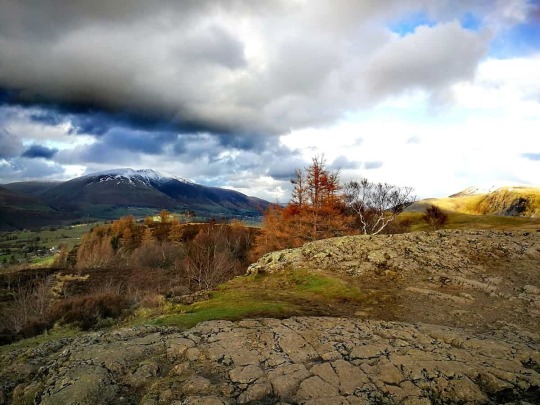
View On WordPress
#Ashness Bridge#Barrow Beck#Bleaberry Fell#Cockermouth#Cumbria#derwent water#Fell#Lake District#Surprise View#True Freedom Seekers#Wainwright#Wainwrights#Walla Crag
0 notes
Photo

Ist diamond pendant made for Christmas stock. Now starting on the rest after my pick me up cup of tea☕. Going to call this range Catbells after the Lake District fell. #richardharrisjewellery #pendant #christmas #diamond #diamondpendant #cupoftea #jewelrydesign #catbells #lakedistrict (at Cumbrian Designs) https://www.instagram.com/p/CE_xUeihJ1S/?igshid=1gw604x4hxlbq
#richardharrisjewellery#pendant#christmas#diamond#diamondpendant#cupoftea#jewelrydesign#catbells#lakedistrict
0 notes
Photo

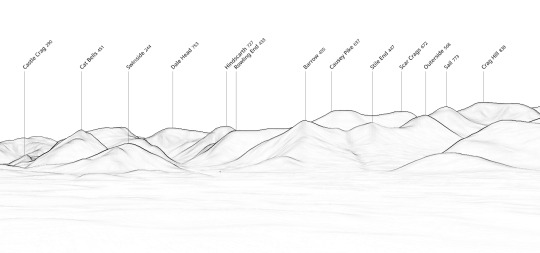
🥾 Walking with Paul Beal
📍 MILLBECK
🗺 Lake District
The view south-west from Millbeck across the River Derwent floodplain between Derwent Water and Bassenthwaite Lake. The Lake District’s north-western fells in the background include Cat Bells, Dale Head, Hindscarth, Causey Pike, Sail and Crag Hill.
👉 https://www.paulbeal.com
👍 #CatBells #DaleHead #Hindscarth #CauseyPike #Sail #CragHill
0 notes
Link
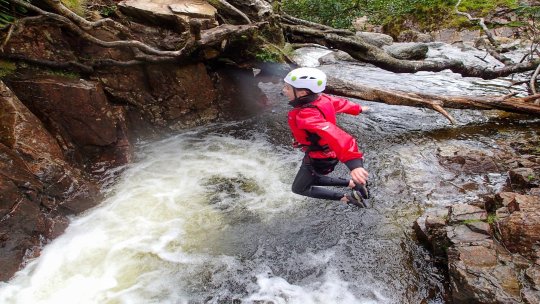
英国湖区是孩子们的天然乐园。(图片:[email protected] District Activities by Lakeland Ascents)
【希望之声2020年6月29日】(编译:袁心怡)英国湖区(Lake District)曾被美国国家地理杂志评选为“一生最值得去的50个地方之一”。湖区度假一直陪伴着许多人的童年。如今每每故地重游时都仿佛昨日重现。这里是一大片由森林、湖泊、高山、溪流、古宅组成的国家森林公园,广袤无垠,风景怡人,是英国游客最多的旅游胜地。每年吸引着人们不断的前来体验冒险之旅,孩子们可以在这广阔的天然游乐场中尽情奔跑。
湖区北部的凯斯维克(Keswick)地区
秋天是去水上探险的好时光,尽管气温有所下降,但季节性的滞后意味着湖水仍然相对温暖。在凯斯维克乘独木舟或皮划艇,就可以发现水滴状的德文特湖(Derwentwater)和它陡峭的护坡。还可以驶向圣赫伯特岛 (St Herbert’s Island)。它是七世纪隐居的圣人的故乡,隐蔽的灌木丛中可找到其简陋的茅房。人们在这里享受着喜爱的户外活动,诸如爬树,游泳,奔跑,假扮海盗等等。
2016年的以英国少年荒岛冒险题材的电影《燕子号与亚马逊号》(Swallows and Amazons)就是在这里拍摄的,孩子们通过以其中的角色互相嬉戏而融入剧中。
爬上凯特贝尔斯(Catbells)山脊顶峰对年轻人来说是标志性的成年的仪式。传统方式是乘坐发射艇从凯斯维克到霍斯尽头(Hawes End),再沿着独特崎岖的山脊梁而上,俯瞰德文特湖。攀爬过程中简单易行的地段熟称“老奶奶塞”,非常适合家庭攀岩活动;富有更大的挑战是附近的巴特米尔山谷(Buttermere Fells),因极其陡峭和岩石嶙峋而令人振奋;相比之下奥罗代尔山谷(Borrowdale Fells)地势虽较低,但更艰难和狂野。
向年轻的家庭介绍偏远的仅有22张床位的斯基德道青年旅社(Skiddaw House),亲历徒步背包旅行。这个英国海拔最高的旅社孤零零地矗立在与它同名的山的东坡上,只有步行或骑山地车才能到达。 3英里的上坡徒步穿越令人印象深刻的白水瀑布(Whitewater Dash)和爬满越桔的山坡。
人们的心被牵动着,孩子们几乎忘记他们背着的背包,包里装着住宿所需的所有物品。旅馆奇妙诡异,拥有生态友好的无电网环保太阳能照明,以木材为燃料的炉灶,泉水和燃气淋浴。没有当代通信工具,无插座,移动信号或互联网。但这里有储备充足的酒吧,自制的蛋糕,破旧的吉他和棋盘游戏。
这家旅馆是攀登斯基德杜山(Skiddaw)和布兰卡特拉山(Blencathra) (英国第三和第八高的山峰)的平台,这两座山对家庭攀岩之旅来说魅力十足又切合实际。
从凯斯维克开车几分钟就到了文莱特(Whinlatter)森林,那里有专门修建的山地自行车道,八岁以上的孩子都可以骑行。这里的环境让人想起了《绝地归来》中居住在树上的伊沃克人(Ewoks)的故乡恩多(Endor),而栎木道蜿蜒的蛇形滑板,起伏和折弯的技术挑战正适合单车爱好者。
您可以在酒店内租用自行车。对于年龄较小的孩子来说,这里有想象力丰富的冒险游乐场,这里通常也有可供选择的滑索和树顶网供他们玩耍。
奥罗代尔地区
在凯斯维克的南部是奥罗代尔(Borrowdale),一个从19世纪80年代这项运动的先驱时代起就以攀岩而闻名的陡峭山谷,现在在孩子们中间仍然很受欢迎。这里即便是闻名的悬崖峭壁,也有轻松的路途,很适合让孩子们尝试在此户外攀岩,它与室内攀岩的体验完全不同。户外攀岩的过程需耐心等待,同时肾上腺素也会明显飙升。
上牧羊人岩(Upper Shepherds Crag)是家庭友好型的攀岩胜地,周围有完美的野餐草地。斯蒂诺斯(Steel Knotts)的石板也适合初学者攀岩。有大孩子的家庭甚至可以尝试在西斯维特(Seathwaite)石板和邵米克吉尔(Sourmilk Ghyll)瀑布登山。同时还可以参观卡斯勒里格(Castlerigg)的古德鲁伊(Druid)石圈。
凯斯维克攀岩墙(Keswick Climbing Wall)就在附近,它提供家庭户外攀岩和高档的室内设施,以应对恶劣天气的袭击。
湖区有很多昂贵而受欢迎的“冒险景点”,少有人烟的角落、岩缝和荒野往往为游客提供了最难忘的体验。在曾自称'冒险专家'的米利肯·道尔顿(Millican Dalton)为家的奥罗代尔洞穴探险就是其中之一。
最好从格兰奇(Grange)村参观这些采石场的洞穴,以便攀登巨大的迷你山的城堡岩,它以其奇特的高原石板碎片和险峻的山顶称奇。在岩洞附近可以寻找到临时的河边绳索秋千,孩子们也常在山顶的天然石滑梯上尽情玩耍而磨破裤子。在自然景观中寻觅和孩子们共同游乐的胜地,是真正意义上的湖区冒险经历。
本文章或节目经希望之声编辑制作,转载请注明希望之声并包含原文标题及链接。
一门三代名医 为什么不准家人和孩子们吃冷饮 中医肾病学宗师邹云翔家训!(图集)
她购置一台自动售货机 孩子们都变成乖宝宝
马里兰州每个郡的食物与营养办公室(Food and Nutrition Office) 向需要协助的家庭,提供孩子们每天的早餐,中饭和点心。
〖兲朝浮世绘〗中共要开始给港澳孩子们洗脑了!
吃不饱的孩子们和不让一个孩子挨饿
安卓翻墙APP、Windows翻墙:ChromeGo
AD:搬瓦工官方翻墙服务Just My Socks,不怕被墙
原文链接:英国湖区 孩子们的天然乐园 完美的家庭冒险之旅(上)
原文链接:英国湖区 孩子们的天然乐园 完美的家庭冒险之旅(上) - 新闻评论
本文标签:印象深刻, 孩子们, 希望之声, 德鲁伊, 攀岩, 游乐场, 独木舟, 自行车, 英国
0 notes